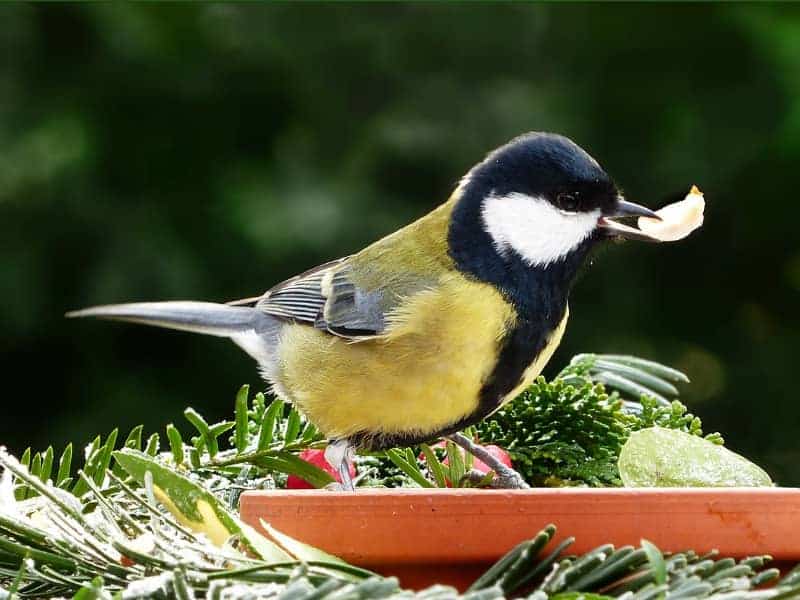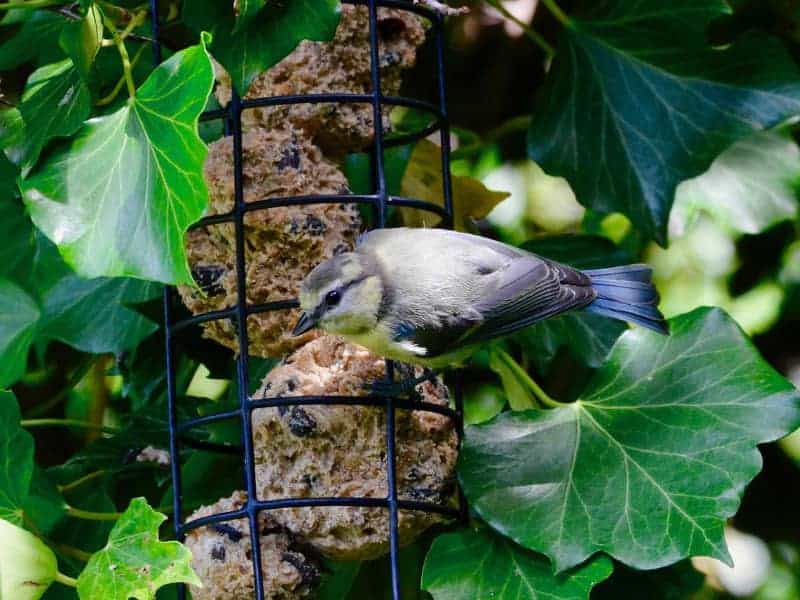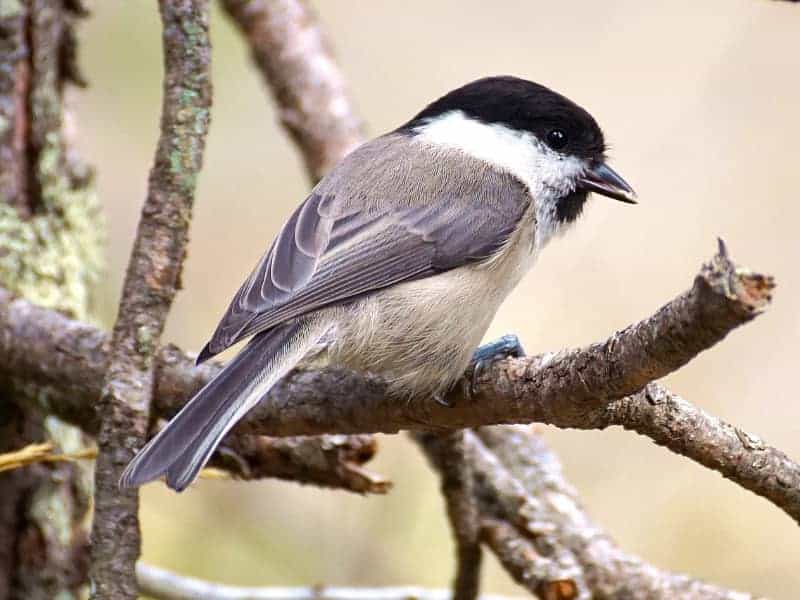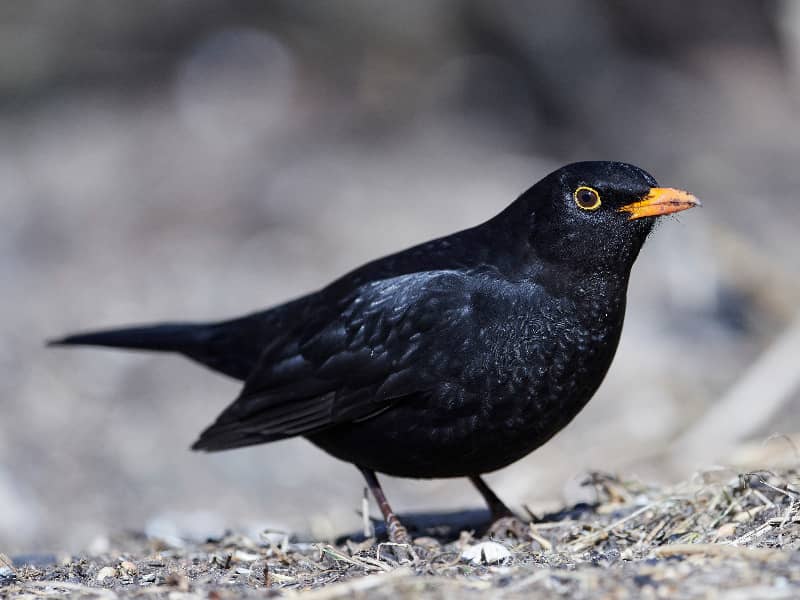
What do titmice eat?
Tits are one of the most common bird species in Germany, but what do tits eat? We report on what the tits like to eat in winter and summer and with what treats, they feed their offspring. And who does not know them, the great tit and the blue tit, with their unusual and beautiful plumage they immediately attract attention when visiting the garden. The tits are very active birds and with them it can also be noisy at times.
In addition, they are sometimes very trusting and cheeky. They like to steal food from the garden table, just like the sparrow. Tits are omnivores, this has contributed to the fact that the population of tits in Germany is very large. This in turn makes it easy for you to attract the beautiful birds to your garden with the right food. This food, in turn, you must adapt to the season so that you do not damage the tits.
What do titmice eat in the summer?
In spring and summer, the food supply for the titmouse is particularly large, because then the omnivorous titmouse can benefit from a richly laid table. This includes worms, caterpillars, beetles, spiders and even aphids. In addition, flying insects are also used as protein donors. However, in order for it to prepare for winter and accumulate a small fat cushion, other foods are necessary.
For the fat layer tits eat nuts, seeds of various plants and seeds of fruits. But the fruits themselves are also a treat for the animals and are rarely spurned. Here, for the titmouse, the sweeter the better. This is also the reason why titmice are often found in the cherry tree or in the berry hedge.
In spring and summer, mainly the protein-rich insects are important for the titmouse. Here you need a lot of energy, which they put into raising their offspring. Therefore, it is also possible in this period that you can attract the titmice with mealworms or dried and frozen insects. If you have a nest of titmice in your garden, they will be very grateful for this offer.
It is also helpful for the tits if there are many plants in your garden that attract insects. Because these insects are caught by the tits and enrich their food supply.
What do tits eat in winter?
When autumn comes, the titmice change their feeding habits. From protein-rich live food to grains and seeds. As long as seeds can still be found in the fields and gardens, this is not a problem for the titmouse. In 95 % of cases, the titmice find sufficient food here and do not have to starve. Only then, when no more seeds can be found, the tits should be supported by us.
As the name suggests, titmouse dumplings are something that titmice particularly like to eat. These dumplings are made from a mixture of fat and seeds. These dumplings can be bought ready as a loose ball or in a net that you can hang. We advise against these nets, because again and again the tits get tangled in them and injure themselves.
But you can also make titmouse dumplings yourself, we'll show you how below. Apples are also gladly accepted by the titmice in the cold season. These are first cut in half and then pierced with a thread. So you can hang the apples and the tits claw at it and enjoy the fresh treat.
At the same time you ensure that the titmouse is not endangered by cats or other animals that hunt on the ground.
What do young tits eat?
Shortly after hatching, young tits are provided with protein-rich food by their parents. Small insects such as flies, mosquitoes or spiders are the food for the first days and weeks. During this time, you should avoid offering winter food to titmice, primarily when the young are fledging. There are several reasons for this.
The young tits can choke on large pieces. Thus, a sunflower seed can already be too large for the young animal and it gets significant problems swallowing. The winter food is almost always added fat. An excellent thing in winter to provide the bird with high-quality nutrients. However, the young birds can poorly digest high-fat food.
Too much of it can cause the animal to die. It is therefore better to provide low-fat and preferably small seeds of native wild herbs. It is even better, of course, if you have the opportunity to offer live insect food. How this works simply and well, we also explain to you further down in the article.
No products found.
What should titmice not eat?
Even though tits, like sparrows, are omnivores, you should not feed them some things. This includes all seasoned foods, as well as bread. Household waste and leftovers are not food for birds of any kind. If a bird steals some of it, it is different than if it ingests a lot of it, because that can lead to significant problems.
Indigestion is the first thing that the titmouse has to experience. In addition, there are other complaints, such as damage to the internal organs, because the organism of the titmouse is not adapted to spices. This can contribute to a significant reduction in the life expectancy of the bird and slowly but surely kill it.
Live food for tits easy to make yourself
For some, this approach may be a bit icky. However, we've had good experiences with it and done correctly it's not as bad as it might sound. You will need:
- Bowl or flower coaster
- An old salad strainer with large holes, stone to weigh it down
- Salad waste
Briefly throw your lettuce trimmings into boiling water so that they become nice and soft. Depending on the type of lettuce, this only takes a few seconds. We have achieved the best results with lettuce. You now put this lettuce in the bowl and place it in some sunny spot outside. The lettuce will start to decompose quickly and the first flies will sit on it and lay their eggs after just a few hours.
Now it's time to put the salad strainer over the bowl and weigh it down with a stone. If you are not sure whether enough eggs have already been laid by the insects, you can raise the lettuce sieve on one side with a stick or stone so that the insects can still reach the lettuce. Already after one or two days you will discover the first fly maggots on the lettuce.
Depending on the number of fly maggots, you can now decide whether to offer this treat to the titmice and all other birds, or wait another day or two. You have a maximum of five days before the first flies hatch in good weather. You then simply need to place the dish itself in an elevated and safe place where the birds can easily fly to it. Within a short time the maggots are eaten by the birds or fed to the young.

Make tit dumplings yourself
What does the titmouse eat? Of course, preferably a titmouse dumpling, at least in winter this is so, because it contains everything the titmouse needs in winter. Making the dumplings yourself is easy and we will show you how. All you need is the following:
- Beef tallow from the butcher, best to put through a meat grinder
- Grain mixture, preferably sunflower and hemp seed mixture
- some cooking oil
For beef tallow: if you do not have the possibility to get beef tallow fresh from the butcher, then coconut fat or clarified butter can be used as an alternative. However, the animal variant is better, because it provides significantly more energy than the other variants. It is important that the fat hardens completely at temperatures of below 10 °C. Above these temperatures you should also not hang tit dumplings outside.
Melt the fat in a saucepan, it should not boil. In the fat is now added the same number of grains as you melted fat. An example for this: For 500 g of beef tallow, 500 g of grain mixture should be added. Also, for every 100 g of suet, one tablespoon of cooking oil should be added to the mixture. The cooking oil ensures that the beef tallow remains supple during drying. Stir the whole thing well so that everything is well distributed.
No products found.
How to shape your own titmouse dumplings
Now you have several options to form the tit dumplings. The fastest and easiest way is by hand. You take a strong string and form a dumpling around the outside and press it firmly together. Make sure that the string is long enough so that you can easily hang it up later and the titmouse has enough space to feed on it in peace. Alternatively, you can fill the hand-shaped tit dumplings into a tit dumpling dispenser.
Another variant is to put the measurements in molds. These can be small cake molds or cookie cutters from Christmas cookies. Here, too, fill in the measurements and let them harden. After hardening, drill a hole in the tit dumpling with a knitting needle and thread a string through it. Also suitable as a suspension is a binding wire, which is easy to push through the tallow mass.
Author

-
Garden animal - A life with nature
Welcome to my animal blog! My name is Dirk and I am happy to take you on my journey through the fascinating world of animals and gardening.
Born 54 years ago, I have had an insatiable curiosity for the animal world around me since childhood. Although I have moved professionally in other industries, my true passion has always been animals and nature. It is remarkable how a small garden has become such an important part of my life.
Many of my fondest memories are associated with the animals that share our home. Whether it's the curious squirrels that scurry across the trees in the morning, the colorful variety of birds that visit our feeders, or the busy bees and butterflies that pollinate our flowers, every moment with them is invaluable to me.
This blog is my contribution to share my experiences, discoveries and insights with like-minded people. Here I will share stories of unforgettable encounters with animals, give tips on gardening and creating wildlife-friendly habitats, and take you on my journeys through nature.
Thank you so much for being here!
Cordial,
Dirk aka garden animal
Last posts
- 27. February 2024PetsVeganes Hundefutter – Grün und Gesund?
- 18. January 2024ChickensOregano für Hühner
- November 27, 2023HamsterDiurnal hamsters
- November 24, 2023HamsterHamster hammock
Letzte Aktualisierung am 2024-10-22 / Affiliate Links / Bilder von der Amazon Product Advertising API


